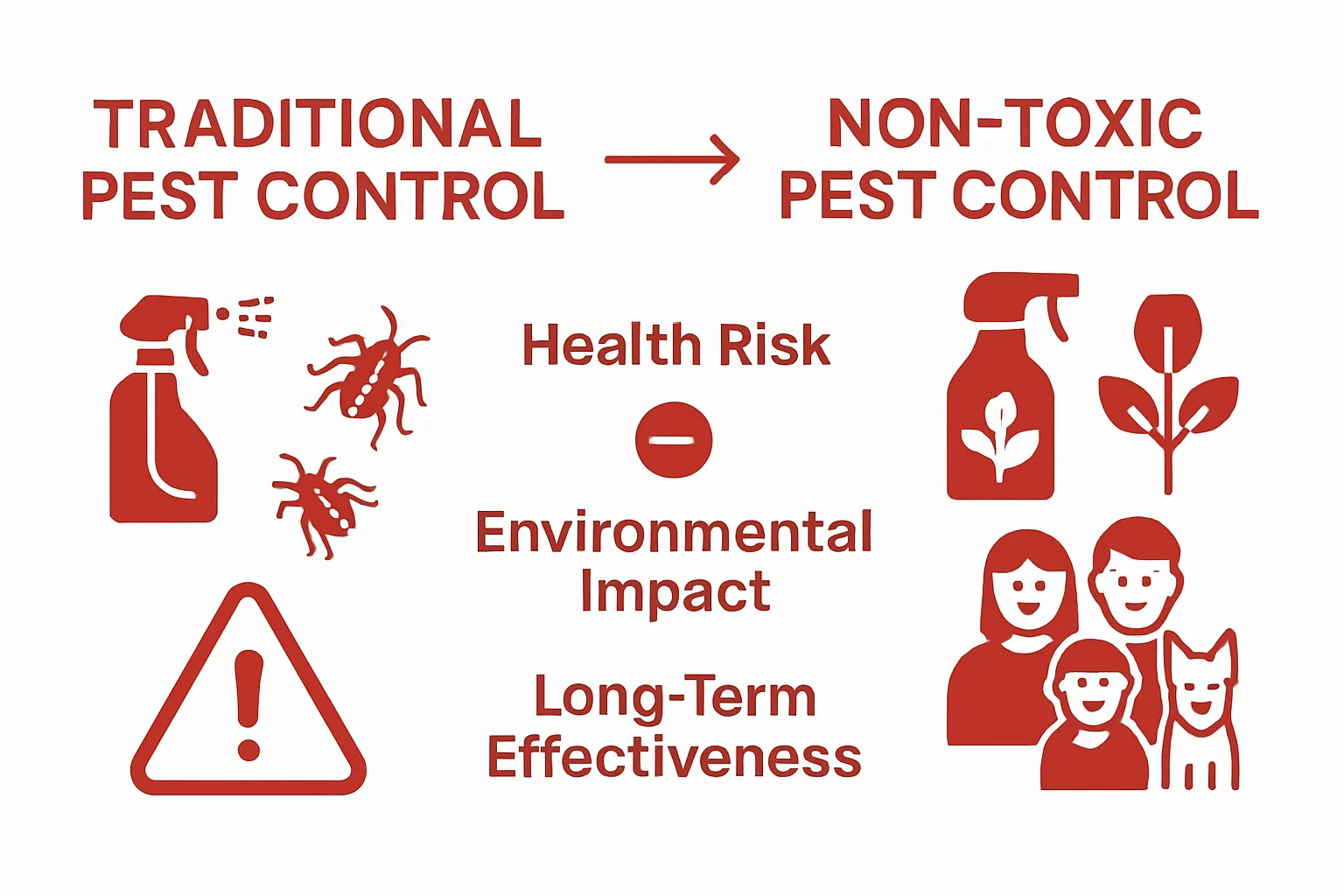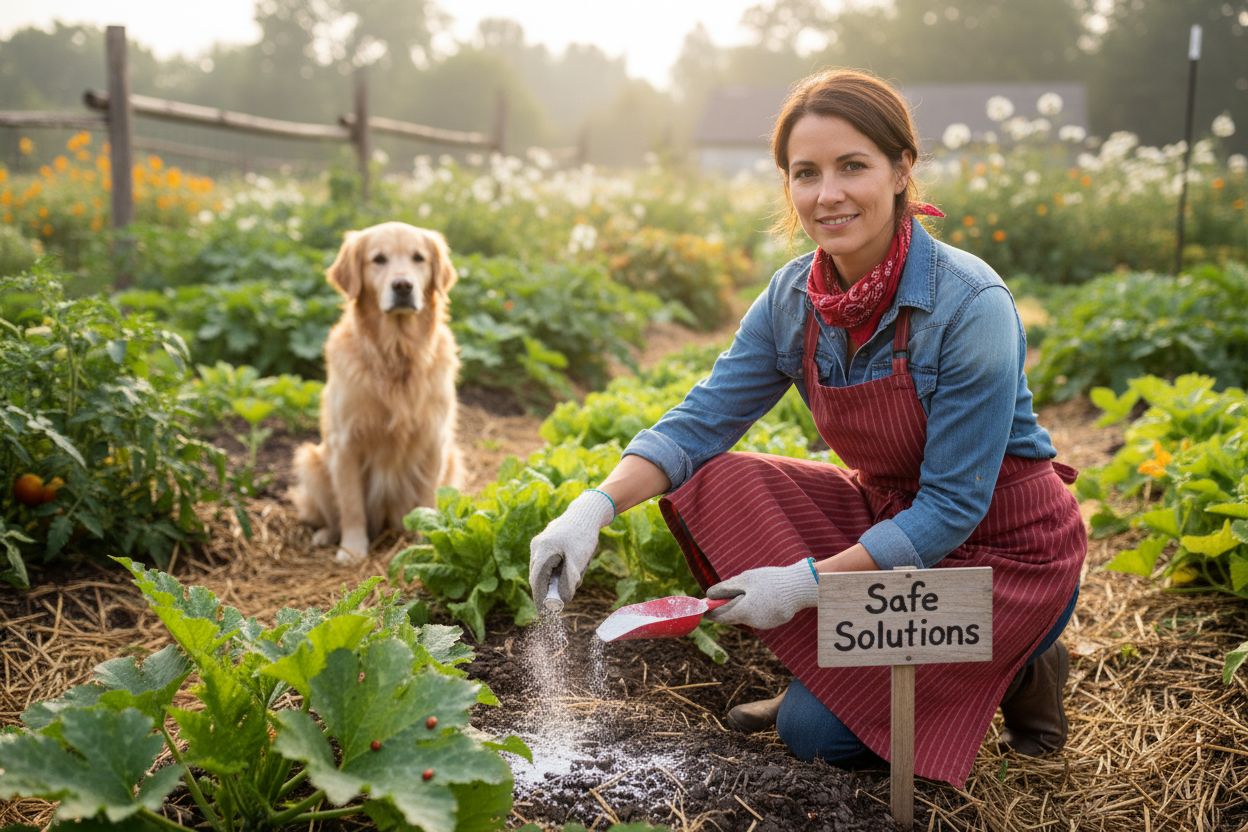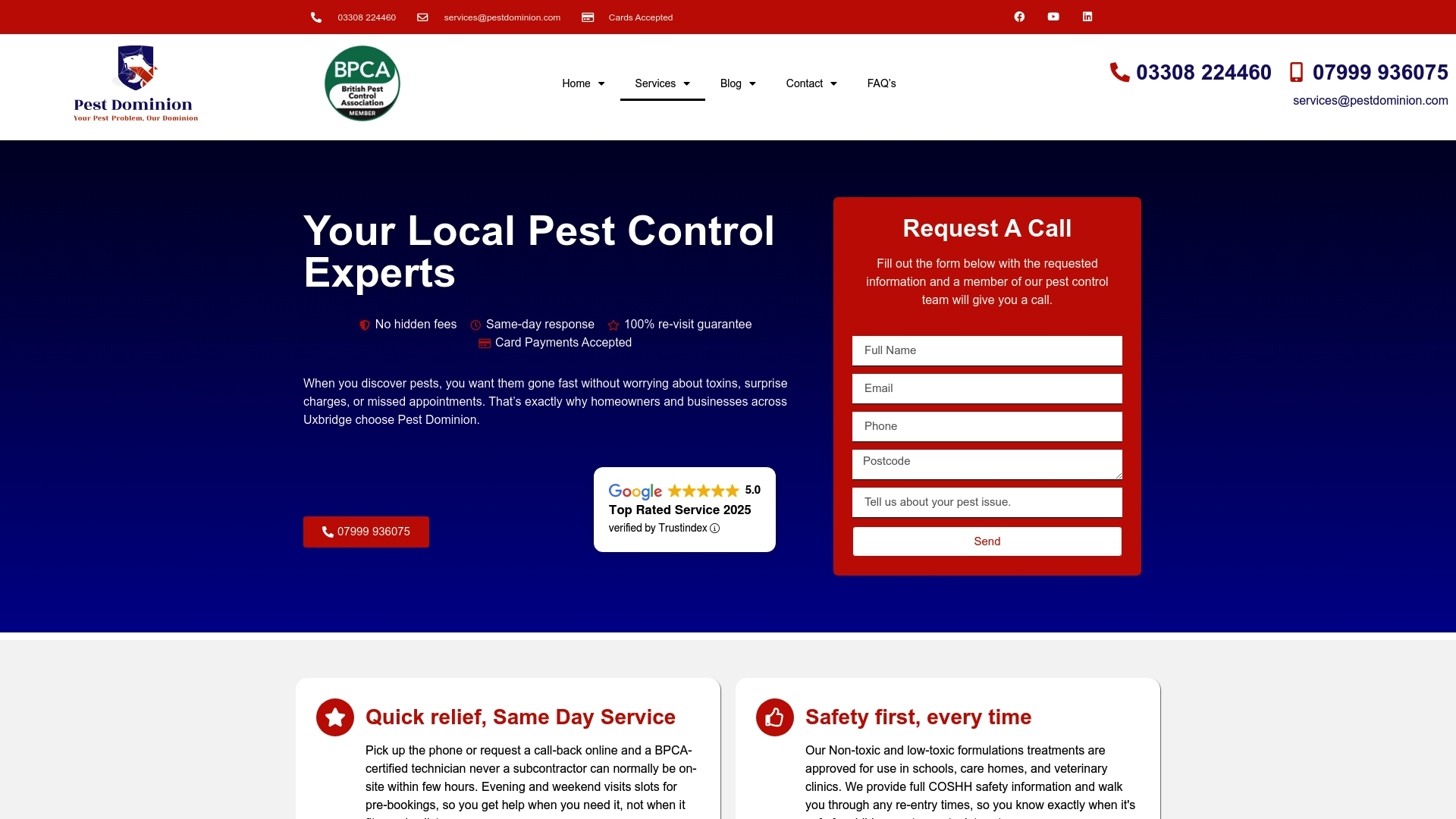People often think pest control means spraying harsh chemicals everywhere. Yet every year, over 160,000 cases of pesticide poisoning are reported in Europe alone. That surprises most who just want a safer home or garden. What changes everything is that non-toxic pest control can actually be more effective in the long run while protecting your health and the environment at the same time.
Table of Contents
- Defining Non-Toxic Pest Control: Key Principles
- The Importance Of Non-Toxic Approaches In Pest Management
- How Non-Toxic Pest Control Works: Mechanisms And Methods
- Types Of Non-Toxic Solutions: From Natural Remedies To Eco-Friendly Products
- Real-World Impacts Of Non-Toxic Pest Control On Health And Environment
Quick Summary
| Takeaway | Explanation |
|---|---|
| Focus on prevention over chemicals | Non-toxic pest control prioritises proactive strategies to prevent pest issues without harmful chemicals. |
| Utilise natural ingredients | Employ plant-based extracts and essential oils for safe pest management, avoiding synthetic pesticides. |
| Protect ecological balance | Non-toxic methods support biodiversity and protect ecosystems, maintaining beneficial insect populations and natural habitats. |
| Implement integrated pest management | Combine various strategies, like biological control and environmental manipulation, to manage pest populations sustainably. |
| Promote human health safety | Non-toxic methods significantly reduce health risks associated with traditional pesticides, leading to a safer environment for all. |
Defining Non-Toxic Pest Control: Key Principles
Non-toxic pest control represents a holistic, environmentally conscious approach to managing pest populations without relying on harmful chemical treatments. Unlike traditional pest management techniques that often involve synthetic pesticides, this method prioritises safety for humans, animals, and ecological systems.
Understanding the Core Philosophy
At its foundation, non-toxic pest control operates on a fundamental principle of prevention and minimal intervention. The approach recognises that pests are part of an ecosystem and seeks to manage their presence through strategic, sustainable methods. Learn more about our comprehensive pest control solutions that embody these environmentally friendly principles.
Key characteristics of non-toxic pest control include:
- Natural ingredient usage: Employing plant-based extracts, essential oils, and biological agents
- Ecosystem preservation: Maintaining balance without disrupting local wildlife
- Long-term strategy: Addressing root causes rather than providing temporary fixes
Mechanisms of Safe Pest Management
According to Environmental Protection UK, effective non-toxic pest control involves understanding pest behaviour, identifying entry points, and implementing preventative measures. This might include:
- Sealing potential access routes
- Removing attractive food and water sources
- Creating natural deterrent environments
- Utilising biological control agents
By focusing on holistic strategies, non-toxic pest control transforms pest management from a reactive chemical intervention to a proactive, sustainable approach that protects both human health and environmental integrity.
The Importance of Non-Toxic Approaches in Pest Management
Non-toxic pest management transcends traditional chemical control methods by offering comprehensive protection for human health, environmental sustainability, and long-term ecological balance. This approach recognises that effective pest control is not merely about elimination but about creating harmonious living ecosystems.

Health and Environmental Protection
Traditional pesticides often contain harmful chemicals that pose significant risks to human and animal health. Explore our risk assessment policy to understand our commitment to safety. According to research from the National Institutes of Health, chronic exposure to chemical pesticides can lead to serious health complications including:
- Neurological disorders
- Respiratory problems
- Developmental challenges in children
- Potential long-term genetic mutations
Ecological Sustainability and Biodiversity
Non-toxic pest management plays a crucial role in preserving local ecosystems. By avoiding synthetic chemicals, these methods protect beneficial insects, pollinators, and microorganisms essential for environmental health. The approach focuses on:
- Maintaining natural predator-prey relationships
- Preventing disruption of soil microbiomes
- Supporting local wildlife populations
- Reducing chemical contamination in water systems
Moreover, sustainable pest control strategies contribute to broader environmental conservation efforts by minimising chemical footprints and promoting natural balance. By understanding pest behaviour and implementing preventative measures, non-toxic approaches offer a more intelligent, responsible method of managing unwanted species without causing collateral ecological damage.
How Non-Toxic Pest Control Works: Mechanisms and Methods
Non-toxic pest control is a sophisticated approach that employs strategic, scientifically-grounded techniques to manage pest populations without relying on harmful chemical interventions. This method focuses on understanding pest behaviour, ecosystem dynamics, and prevention strategies.
Biological Control and Natural Predation
Check out our comprehensive FAQ section for more insights into our pest management approaches. According to Food and Agriculture Organization, Integrated Pest Management (IPM) represents a cornerstone of non-toxic pest control. This approach involves:
- Introducing natural predators specific to target pest species
- Utilising parasitic organisms that control pest populations
- Implementing biological agents that disrupt pest reproduction cycles
Environmental Manipulation and Prevention Strategies
Non-toxic pest control emphasises creating environments that naturally discourage pest infestations. Key strategies include:
- Sealing potential entry points in buildings
- Removing attractive food and water sources
- Maintaining proper sanitation and waste management
- Implementing landscape designs that reduce pest habitats
These methods work by understanding and interrupting pest survival mechanisms. By addressing root causes and creating unfavourable conditions, non-toxic approaches prevent pest establishment more effectively than traditional chemical treatments. The goal is not just elimination but sustainable management that maintains ecological balance and protects human health.
Types of Non-Toxic Solutions: From Natural Remedies to Eco-Friendly Products
Non-toxic pest control solutions encompass a diverse range of innovative approaches that prioritise safety, effectiveness, and environmental sustainability. These solutions leverage natural ingredients, advanced technologies, and strategic methodologies to manage pest populations without compromising human or ecological health.
Natural Botanical Repellents and Extracts
Learn more about our natural pest control techniques for comprehensive insights. According to the Environmental Protection Agency’s Safer Choice program, eco-friendly pest control products must meet rigorous safety standards. Natural solutions include:
- Essential oil-based repellents (peppermint, eucalyptus, lavender)
- Plant-derived extracts with insecticidal properties
- Diatomaceous earth for mechanical pest control
- Neem oil as a natural pesticide alternative
Biological and Technological Non-Toxic Solutions
Advanced non-toxic pest management integrates scientific understanding with environmentally conscious technologies. These innovative approaches focus on:
- Ultrasonic pest deterrent devices
- Pheromone traps that disrupt insect reproduction
- Beneficial nematodes for soil-based pest control
- Microbial agents targeting specific pest species
By combining scientific research, natural ingredients, and cutting-edge technologies, non-toxic solutions offer a holistic approach to pest management that protects both human health and environmental ecosystems.
The table below outlines common types of non-toxic pest control solutions and their main features, as presented in the article.
| Solution Type | Examples | Main Features |
|---|---|---|
| Botanical Repellents | Essential oils (peppermint, eucalyptus, lavender), neem oil | Plant-based, repels pests naturally, minimal toxicity |
| Mechanical Solutions | Diatomaceous earth | Physical control, damages insects mechanically without chemicals |
| Biological Agents | Beneficial nematodes, natural predators, microbial agents | Uses organisms to control pest populations, environmentally safe |
| Technological Devices | Ultrasonic deterrent devices, pheromone traps | Non-chemical, disrupts pest behaviour or reproduction cycle |
Real-World Impacts of Non-Toxic Pest Control on Health and Environment
Non-toxic pest control represents more than just an alternative approach to traditional pest management it signifies a fundamental shift towards sustainable, responsible environmental stewardship. By prioritising human and ecological health, these methods demonstrate profound long-term benefits across multiple interconnected systems.
Health Protection and Risk Reduction
Our comprehensive risk assessment policy underscores our commitment to safety. According to research from the National Institutes of Health, switching to non-toxic pest control can significantly reduce pesticide-related health risks, including:
- Decreased incidents of acute pesticide poisoning
- Reduced long-term exposure to carcinogenic chemicals
- Minimised neurological and developmental health risks
- Lower respiratory and dermatological complications
Ecological Preservation and Biodiversity
Non-toxic pest control methods contribute critically to maintaining environmental balance. These approaches protect complex ecological networks by:
- Preserving beneficial insect populations
- Maintaining soil microorganism diversity
- Protecting water systems from chemical contamination
- Supporting natural predator-prey relationships
By adopting holistic, non-toxic strategies, we not only manage pest populations effectively but also contribute to broader environmental conservation efforts.
Below is a comparison table summarising the main differences between traditional chemical pest control and non-toxic pest control approaches as described in the article.
| Aspect | Traditional Chemical Pest Control | Non-Toxic Pest Control |
|---|---|---|
| Main Method | Synthetic chemical pesticides | Natural ingredients, biological and preventative strategies |
| Impact on Health | Higher health risks including poisoning, respiratory issues, and neurological disorders | Significantly reduced health risks; safer for humans and animals |
| Environmental Impact | Disruption of ecosystems; harm to beneficial insects and soil microbiomes; water contamination | Supports biodiversity; preserves ecological balance and beneficial species |
| Focus | Reactive elimination of pests | Prevention, minimal intervention, and sustainable management |
| Longevity of Results | Often temporary, may need repeated application | Long-term, addresses root causes and prevents recurrence |

Discover True Peace of Mind with Safe, Non-Toxic Pest Control
Are you worried about the dangers of chemical treatments in your home or business? As highlighted in the article, non-toxic pest control focuses on protection for your health and the environment, using methods that are safe, preventative, and effective over the long term. If you feel frustrated by quick fixes that put your family, pets, or clients at risk, it is time to choose a professional approach that really prioritises your wellbeing.

Join the many satisfied customers across Slough and neighbouring towns who trust Pest Dominion Limited for eco-friendly solutions that genuinely work. Our experienced team delivers rapid response, transparent advice, and reliable, non-toxic pest control that aligns with your values. Do not wait for pests or harmful chemicals to disrupt your life. Visit Pest Dominion Limited now to secure your safe, lasting, and local pest management service. For more detail on our natural pest control techniques, read about our natural flea control or find answers to common questions in our helpful FAQ.
Frequently Asked Questions
What is non-toxic pest control?
Non-toxic pest control is an environmentally conscious approach to managing pests that avoids the use of harmful chemical treatments, focusing instead on natural ingredients, ecological balance, and preventative strategies.
How does non-toxic pest control work?
Non-toxic pest control works by understanding pest behaviour and ecosystem dynamics. It employs methods such as biological control, natural deterrents, and environmental manipulation to manage pest populations in a safe and sustainable way.
What are some examples of non-toxic pest control methods?
Examples of non-toxic pest control methods include the use of natural botanical repellents, biological agents like beneficial insects or nematodes, and environmentally friendly products that meet safety standards, such as essential oil-based repellents and diatomaceous earth.
Why is non-toxic pest control better for health and the environment?
Non-toxic pest control is better for health as it reduces exposure to harmful chemicals associated with traditional pesticides, which can lead to various health issues. It also supports ecological sustainability by protecting beneficial insect populations and maintaining healthy ecosystems.

